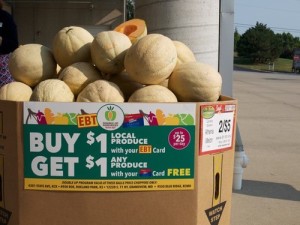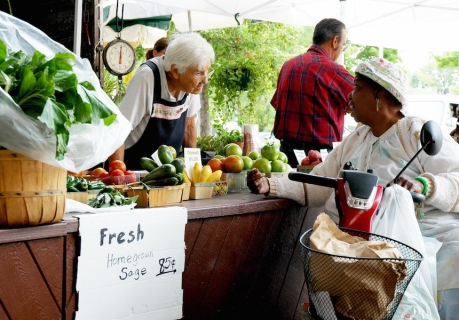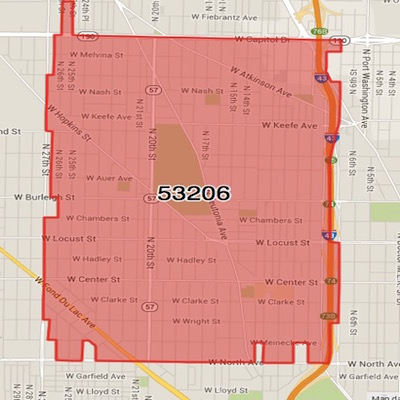Shirley Sherrod speaks to an audience of more than 100 at the Just Food, Just Communities event. Photo: Subashni Raj
By DAVID J. HILL
Published November 12, 2015. Article available here.
Civil rights leader Shirley Sherrod shared her powerful message of hope and resiliency amid overwhelming obstacles as part of a food justice event organized this week by the Food Lab in UB’s School of Architecture and Planning.
More than 100 people attended Just Food, Just Communities on Tuesday in King Urban Life Center Church on Buffalo’s East Side to hear Sherrod’s keynote address and learn about food system success stories happening in Buffalo.
Sherrod grew up on a farm in segregated Baker County, Georgia. During her last year of high school, she decided she had enough. “I applied to colleges in the North because I had no intention of living my life in the South. I was getting out. I was getting away from the farm and the conditions we had to live in in Baker County,” she said. “But I always say to young people, ‘You can never say what you’ll never do.’”
Sherrod’s message comes at an especially important time for Buffalo as community organizations work to improve access to food in poor neighborhoods, said Samina Raja, associate professor of architecture and director of the Food Lab. “We know we have a lot of challenges, but we also have a lot of heart,” she said.
“Buffalo is at a point in its journey where we needed this story of hope,” added Subashni Raj, a UB Food Lab doctoral student who helped organize the event with master’s student Enjoli Hall.
“You kept saying ‘Don’t give up’ and I kept hearing people here say ‘That’s right, let’s not give up,’” Raj said. “What this needs is a community and that’s what we have with over 100 people here.”
Story of hope
In March 1965, the year Sherrod graduated high school, her father, Hosie Miller, was murdered by a white farmer over a livestock dispute. He died only a few weeks before his wife, Grace, gave birth to their sixth child — the son he’d always wanted. (Miller had given each of his daughters a boy’s nickname: “Mine was Bill,” Sherrod said.)
The killing — and failure of an all-white grand jury to return charges against the white farmer changed Sherrod’s mind about leaving. “As the oldest in the family, I felt I needed to do something,” she said. “I remember as our house filled with people who were coming to try to help us deal with it, I went into one of the bedrooms and I was just praying to God for an answer. And the thought came to me: ‘You can give up your dreams of living in the North and devote your life to stay in the South and devote your life to working for change.’ So I made a commitment that night that I would stay and I would work. And that’s what I’ve done these last 50 years plus a few months.”
As a leader of the civil rights movement in Baker County, Sherrod saw the need to address economic development disparities in southwest Georgia. “You have to help people figure out how to live and exist where they are,” she said. That’s why she and her husband, Charles, helped co-found New Communities Land Trust — a collective farm in Georgia owned and operated by black farmers — in 1969. She is now executive director of the Southwest Georgia Project for Community Education, another not-for-profit she co-founded in the 1960s.
The farmers grew a variety of crops and opened a roadside market. But during years of drought in the early 1980s, many black farmers faced discrimination and were denied emergency federal funding — while white farmers nearby were being awarded the same grants. New Communities ended up losing nearly 6,000 acres of land. “We lost everything in 1985, largely due to discrimination by local whites and (the U.S. Department of Agriculture). It was supposed to be all over for us. But we didn’t give up,” Sherrod said.
Eventually, New Communities received the largest payout in the Pigford Settlement, the class-action lawsuit against the federal government that alleged racial discrimination against black farmers. The money enabled them to buy a plantation once owned by the largest slaveholder in Georgia. And just last month, the owners of a vacant Winn Dixie supermarket building in Albany, Georgia, donated the 47,000-square-foot building on four acres of land to the Southwest Georgia Project.
“Each time a door seemed to close, another opened. You can’t give up. You just have to keep working, stay true to what you’re trying to do,” Sherrod said.
Panelists discuss Buffalo food successes
From left: Panelists Melissa Fratello, executive director, Grassroots Gardens of Buffalo; Bridget O’Brien-Wood, director, Buffalo Public Schools Child Nutrition Services; Rita Hubbard-Robinson, Erie County Medical Center; Derek Nichols, program manager, Grassroots Gardens of Buffalo; and Rebekah Williams, youth education director, Massachusetts Avenue Project, talk about recent successes in addressing food injustices in Buffalo. Photo: Subashni Raj
As part of Tuesday’s Just Food, Just Communities event, representatives from several community organizations talked about recent successes in addressing food injustice in Buffalo. Highlights include:
- Rita Hubbard-Robinson, who helped start a farmers market in a parking lot across from Erie County Medical Center, reported the Healthy Corner Store initiative has identified store owners — one on Amherst Street and another on Lisbon Avenue — willing to serve as pilot stores for the initiative, which will make fresh produce and other healthy foods more available in Buffalo’s 14215 zip code.
- Bridget O’Brien-Wood, director of Buffalo Public Schools Child Nutrition Services, provided an update on changes Buffalo schools are making to implement healthier menus and to educate kids on where their food comes from.
- Melissa Fratello, executive director of Grassroots Gardens of Buffalo, noted that her organization has grown from around 20 gardens to 94 since 2010. “We’re experiencing exponential growth and I don’t think it’s due to a trend in community gardening. I think it’s to address issues in our community, to find solutions to food access issues,” she said.
The UB Food Lab thanks the following community partners and sponsors who made the event possible: MAP, Grassroots Gardens of Buffalo, UB Civic Engagement and Public Policy Research Initiative, Buffalo Councilman David Rivera’s office, Buffalo Public Schools Child Nutrition Services and the King Urban Life Center.







